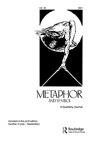Ploke
IF 3.3
3区 文学
0 LANGUAGE & LINGUISTICS
引用次数: 3
Abstract
ABSTRACT Ploke, the scheme of perfect lexical repetition, is utterly fundamental to language and thought. If that sounds like someone talking about metaphor, it is because ploke is to schemes as metaphor is to tropes. Like metaphor, ploke is the linguistic reflex of a neurocognitive pattern bias (repetition to metaphor’s similitude). Like metaphor, ploke is not a single figure but many (epanaphora, epiphora and epizeuxis, for instance, to metaphor’s personification, anthropomorphism, and reification). Like metaphor, there are “dead” ploke as well as live ploke (for instance, the number of repeated instances of ploke and metaphor in this abstract that likely escaped your figurative notice, just as leg of a table and head of lettuce regularly escape our figurative notice). Like metaphor, the processes that give rise to ploke, are also highly productive – in word formation, in the acquisition and dissolution of language, in construction and idiom formation, in large patterns of thought and discourse, often leveraging iconicities (the principle of quantity and the principle of identity). I offer each of these analogies to support the superordinate analogy, Ploke : Scheme :: Metaphor : Trope, and argue for the centrality of this neglected figure.错误
Ploke是一种完美的词汇重复方案,是语言和思想的根本。如果这听起来像是有人在谈论隐喻,那是因为ploke指的是计划,隐喻指的是比喻。和隐喻一样,ploke是神经认知模式偏见(重复隐喻的相似性)的语言反射。与隐喻一样,普洛克不是一个单一的人物,而是多个(例如,埃帕纳普拉、埃帕诺拉和埃帕泽克斯,指隐喻的拟人化、拟人化和物化)。就像隐喻一样,有“死的”扑通和活的扑通(例如,在这个抽象中,扑通和隐喻的重复次数可能会逃过你的形象注意,就像桌子腿和生菜头经常逃过我们的形象注意一样)。与隐喻一样,产生ploke的过程也具有很高的生产力——在单词形成、语言的习得和分解、结构和习语形成、大型思维和话语模式中,通常利用象似性(数量原则和同一性原则)。我提供了这些类比中的每一个来支持上级类比,Ploke:Scheme::隐喻:奖杯,并为这个被忽视的人物的中心地位辩护。
本文章由计算机程序翻译,如有差异,请以英文原文为准。
求助全文
约1分钟内获得全文
求助全文
来源期刊

Metaphor and Symbol
Multiple-
CiteScore
2.90
自引率
0.00%
发文量
23
期刊介绍:
Metaphor and Symbol: A Quarterly Journal is an innovative, multidisciplinary journal dedicated to the study of metaphor and other figurative devices in language (e.g., metonymy, irony) and other expressive forms (e.g., gesture and bodily actions, artworks, music, multimodal media). The journal is interested in original, empirical, and theoretical research that incorporates psychological experimental studies, linguistic and corpus linguistic studies, cross-cultural/linguistic comparisons, computational modeling, philosophical analyzes, and literary/artistic interpretations. A common theme connecting published work in the journal is the examination of the interface of figurative language and expression with cognitive, bodily, and cultural experience; hence, the journal''s international editorial board is composed of scholars and experts in the fields of psychology, linguistics, philosophy, computer science, literature, and media studies.
 求助内容:
求助内容: 应助结果提醒方式:
应助结果提醒方式:


